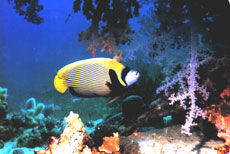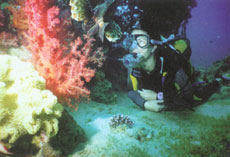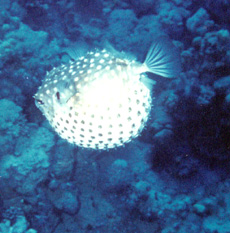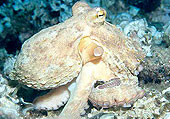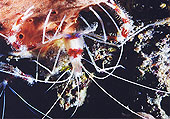Wassersport
und Tauchen:
Außer dem Frei- und Hallenbad
in der "Al Hussein Sports City", welche i.d.R. nur für Mitglieder zugänglich
sind, gibt es in Jordanien keine öffentlichen Schwimmbäder. "Nicht-Hotelgäste"
können gegen Eintrittsgeld, die Pools der Hotels benutzen.
Bademöglichkeiten gibt
es bei den heißen Quellen in Hemma und Zarqa Ma'in, am Toten Meer und am Golf
von Aqaba.
Am Toten Meer hat das
Rasthaus eine öffentliche Badeanlage mit Duschen, Umkleidekabinen, Kinderspielplatz
und Restaurant.
Auch die Hotelstrände
der Hotels sind i.d.R. gegen Eintritt zugänglich.
Das beste Gebiet zum
Schwimmen und Wassersport ist der Strand von Aqaba. Die Strandhotels verfügen
über eigene Swimmingpools, und wer ein Bad im Meer nehmen will, für den stehen
Duschen in den Hotelanlagen bereit.
Einen öffentlichen Badeplatz
mit Duschen und Schattendächern gibt es am Südstrand, nahe dem Königlichen
Tauchzentrum (Royal Diving Club).
Es gibt insgesamt 14
verschiedene Tauchgründe in unmittelbarer Nähe der Tauchbasis.
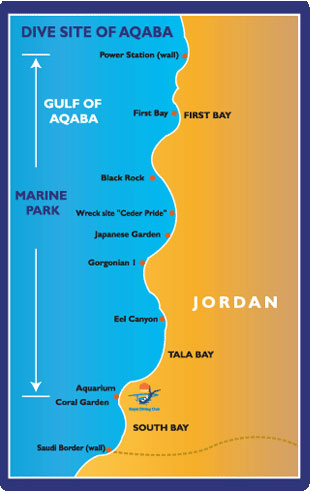
Besonders interessant
ist das alte Wrack "Cedar Bride", welches speziell für Taucher in Aqaba vor über 20 Jahren
versenkt wurde.
IIn den Sportclubs
kann man sich nicht nur Boote (Ruderboote, Motorboote, Tretboote, Scooter),
Surfbretter, Wasserski, Taucher- und Schnorchelausrüstungen mieten, sondern
es werden auch Tauchkurse (C.M.A.S., Padi) abgehalten.
Eine der ältesten Tauchanlagen in Jordanien, die lange Zeit die modernste
und beste Tauchanlage des gesamten Nahen Ostens war, ist das Royal Diving Center. Es wurde von König Hussein, der selbst begeisterter Taucher war, ins Leben gerufen.
Es befindet sich am Südstrand,
direkt bei den schönsten Korallenriffen des Roten Meeres. Auch Schnorchler
kommen hier auf ihre Kosten, denn am Hausriff findet man ein Unterwasserparadies
schon knapp unter der Wasseroberfläche.
In den letzten Jahren wurden in Aqaba viele neue Tauchclubs gegründet Aqaba zählt heute 20 modern ausgestattete Tauchbasen.
Für Tauchunfälle ist Aqaba
gut gerüstet. Das Royal Diving Center ist mit dem Krankenhaus, in dem sich
auch eine Druckkammer befindet, per Funk verbunden.
Informationen
über die Tauchgründe in Englisch
All dives have an easy
shore entry and exit, as well as access by boat. The fringing reefs starts
very close to the shore, which is also ideal for snorkellers. The dive sites
are made up of walls, canyons or gardens. Everyone can find something beautiful
or special, whether they are experienced or novice divers.
The coral reef is in
an excellent condition and home to wide range of fish like groupers, parrotfish,
angelfish, butterfly fish, moray eels, lionfish and, close to the sea anemones,
the clownfish and turtles regularly visit the reefs.
First Bay
Situated south of the Marine Science Station. This is a fringing reef about
700 m long, with very prolific coral and fish life. The reef starts from 2
m and extends down to 40 m and attracts shoaling fish. Sea bass, fusilier,
squid and octopus are common, as well as puffer fish, lionfish and groupers,
making this an excellent site for photographers.
Black Rock
This site has very easy access and is ideal for snorkelling and anyone who
is new to coral gardens. It starts just below the surface and extends outwards
for approximately 30 m, then it drops away. Sea life includes emperor, snapper,
lyre tail, small triggerfish, wrasse, parrotfish, lionfish and scorpion fish,
box fish, many butterfly fish and is a popular spot to see turtles.
Cedar Pride
This is the wreck of a Lebanese freighter, sunk in 1985 at the wish of King
Abdullah as an attraction for divers. She is 80 m long & 20 m wide and
lies on her port side, across two reefs, in a depth of 12-28 m. It is possible
to swim under the hull at around 25 m. Soft and hard corals have rapidly colonised
the wreck, which is home to several large sea bass. Grouts can be seen and
a shoal of barracuda patrols her. Martin Edge called this one of the world's
best wreck sites (article in "Diver").
Japanese Garden
Between the wreck and the shore, just off the starboard bow, lies a reef,
which slopes down from 10 m to 24 m with a drop off on one side. Here can
be found a wide range of coral, fish life and large pelagic species, which
approach the reef to feed.
Gorgonian I
This is a relatively shallow site, generally 10 m. It is named after a large
Gorgonian fan coral, which is at 15 m. This site has splendid examples of
massive coral formations, including a lettuce coral the size of a small house.
There are also lots of rock pinnacles smothered in fish life and both hard
and soft corals. One of these pinnacles is covered in lionfish, which gather
in large numbers.
Eel Canyon
This site provides a dramatic dive with lots of different invertebrate life
and lots of large coral outcrops offering a variation in depth and contour.
The canyon splits the reef to a valley with a sandy bottom and a big table
coral. The reef is flat, sloping and descends to 40 m. Needless to say, there
are eel morays as well as scorpion fish, lionfish, and many butterfly fish.
Aquarium
Located in front of RDC, to the north of the jetty. The maximum depth is 35
m and offers a variety of patchy, soft & hard corals with a lot of puffer
fish, wrasse, snappers and damsels, as well as stingrays in the sandy bottom.
The Gardens
Located in front of RDC, to the south of the jetty. Abounds with healthy,
huge table corals and pinnacles covered with soft coral. Lots of reef fish,
but if you look closely you will also find sea horses, sand gobies and eel
morays.
Saudi Border
Otherwise known as ‘The Drop Off,' so called because it is just that!
The top of the reef starts at 5 m with patch reef and the reef top itself
extends approx. 30-40 m seaward. At this point a wall of living coral drops
down from 12 m to 45 m, and beyond. There are small caverns at 30 m where
plate corals abound. At around 40 m a large grouper is to be found hiding
behind a rock pinnacle. Here it is common to see turtles and the sand is home
to some large rays and deep water shoaling fish such as jacks.
Power Station
Here the reef slopes from the surface to 12 m, before dropping at 20 m, to
a sheer wall. Swimming along the edge of the wall offers spectacular views.
This is the hunting ground of large pelagic species. Soft corals abound as
nutrient rich waters gently flow along the wall. This dive requires good buoyancy
control and offers some magnificent, coral outcrops with huge numbers of fish.
This can also be a shallow water dive between 12 m and 5 m with an abundance
of varied hard corals.



